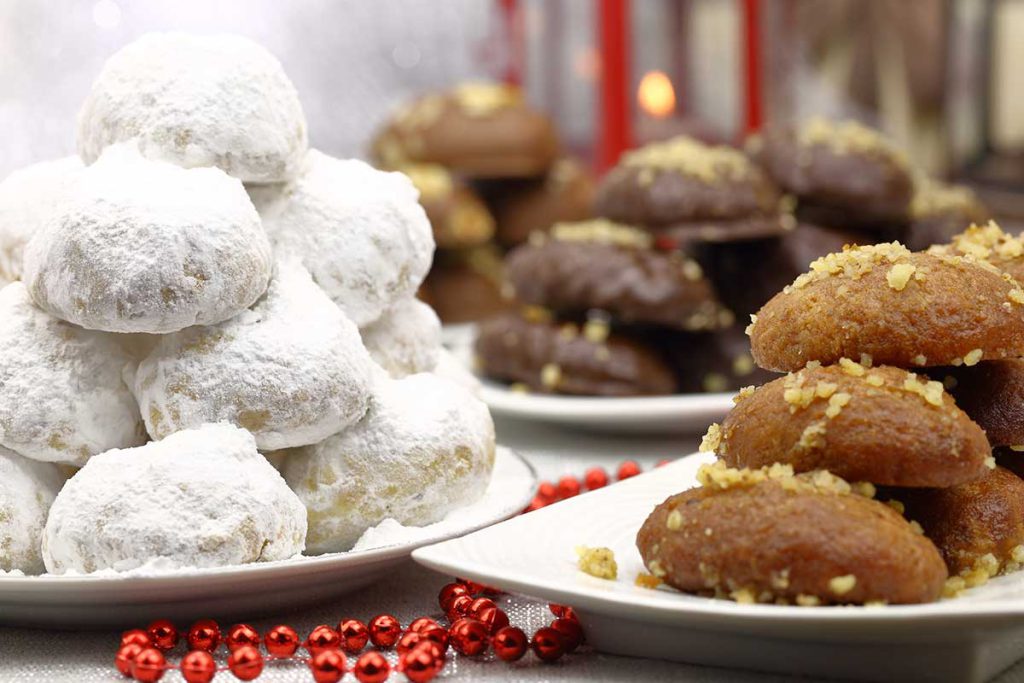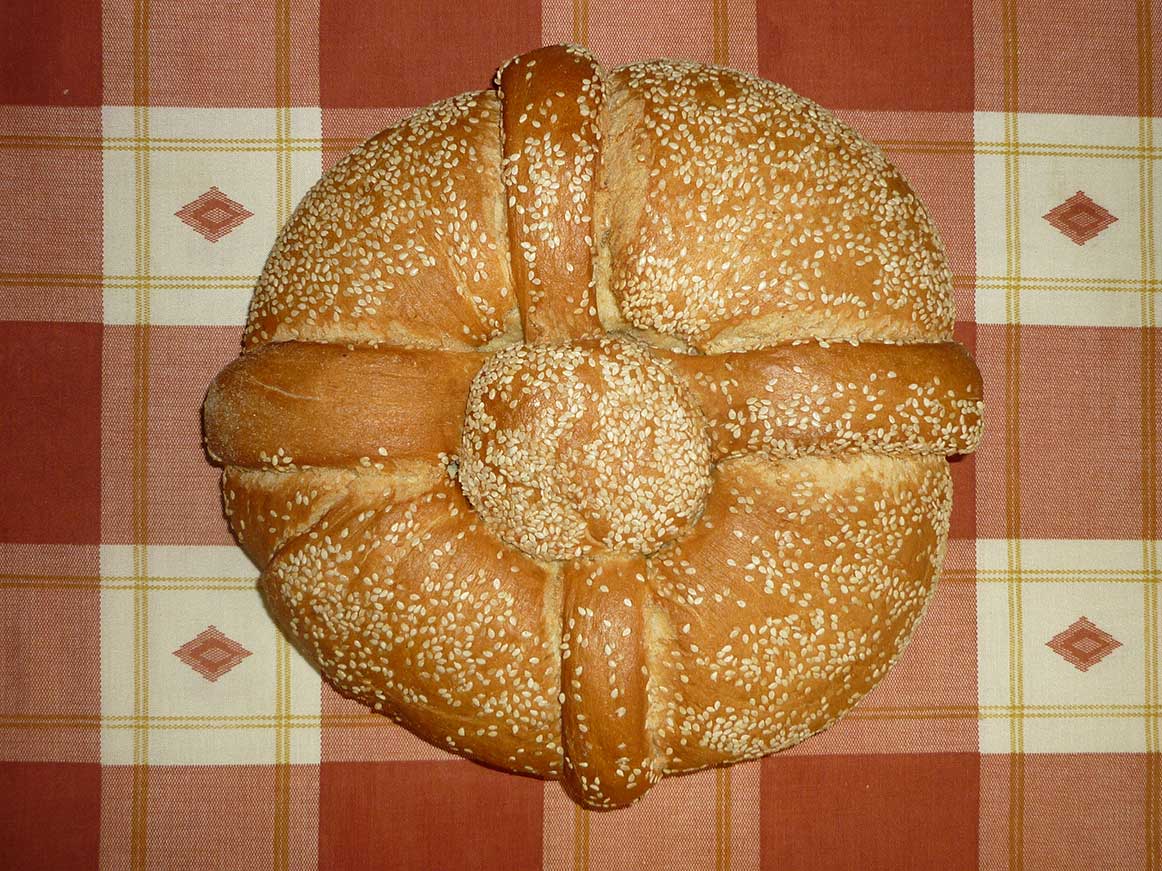The first Christmas trees appeared sometime in 16th-century Germany, decorated with fruit and sweets for children to pick on Christmas Day. But the whole bring-a-tree-inside-your-home trend started in the USA sometime in the 1850s, and personalities like Thomas Edison – who sold the first Christmas tree lights – are the ones who made this novel tradition popular enough to take over the world.
But on Crete Island, although there are modern Christmas trees and Christmas lights with colourful modern decorations everywhere, the locals still hold a cherished tradition: karavaki.
Although King Otto of Greece was the first to decorate a Christmas tree in Greece in 1833, the karavaki endured, maybe because of Greece’s ancient seafaring tradition or because fir trees grow sparsely on Greek islands, if not at all. Nevertheless, Karavaki is one of the Cretan cherished Christmas traditions, and here are several others you could enjoy shall you choose a Christmas holiday on the island.
Christmas Boats in Bright Lights: Karavaki
Karavaki – boats decorated with twinkly Christmas lights – are almost everywhere on the island, especially in villages along the seashore. They are a Greek tradition specific to islands and coastal towns on the mainland. They represent a tribute to the sea, seafarers, and St. Nicholaus, the patron saint of sailors.
Kalanda – Christmas Carols
Christmas carols (kalanda or kalanta) have a long tradition in Greece, with roots in Antiquity. Kalanda comes from the Latin calanda, the ancient Roman calendar’s first day of the month. In their current form, the carols date from the Byzantine era.
While Christmas carols are a tradition all over Greece, they are somewhat different and more particular on Crete Island. The local dialect gives the verse a unique beauty. At the same time, the lyra makes the tunes truly memorable: these are just some examples attesting that kalandas include Crete’s rich culture and customs.
Cretans tread on traditional carols and change them to suit their needs. For example, they will include wishes of prosperity for the family at the end of a traditional kalanda – therefore Cretan Christmas carols may vary from village to village and even from family to family.
Christopsomo – Christ’s Bread
A staple at the Christmas table is Christopsomo (Christ’s Bread), prepared on Christmas Eve. Christopsomo is a sweet and aromatic bread made with flour, sugar, honey, almonds, and walnuts and flavoured with mahleb (an aromatic spice made from cherry seeds) and anise, among other baker’s essences.
If you are not in Crete at Christmas, you can follow many recipes online, including this one from Chef Akis Petretzikis. Cretan women and bakers often repeat, “Christ is born, the light rises, so the yeast will come alive” while kneading the bread.
Christopsomo’s traditional decoration is the cross; however, this may be accompanied by other motifs, like grapes, olive branches, flowers, birds, wheat, etc., depending on that household’s trade and craft.
Traditionally, before consumption on Christmas day, the head of the household must bless the Christopsomo.
There Is no Santa on Christmas Day
Well… traditionally, there was not; however, modern times “imported” the jovial western Santa Claus dressed in red garments. So, Cretan children will receive presents on Christmas Day, although Santa Claus is not a local tradition.
On December 6 every year, Cretans celebrate Agios Nikolaos – Saint Nicholas of Myra, Defender of Orthodoxy, Wonderworker, Holy Hierarch, Bishop of Myra – the patron saint of sailors and children who inspired the modern Santa Claus (Saint Nick). Agios Nikolaos lived between 270 and 343 and probably died on December 6, making this the Saint’s feast day. He performed many miracles during his life, earning him the moniker Nicholas the Wonderworker. Children will receive small gifts like sweets and fruit on the Saint’s feast day.
The traditional equivalent for Santa Claus on Crete Island is Ãgios VasÃleios or Saint Basil the Great. His feast day is January 1st, so he will bring presents to everyone on New Year’s Eve. These presents may be symbolic because the focus is on the meaning of giving and family time, but children will get many surprises. Another tradition is to donate to charities on New Year’s Eve.
Melomakarona and Kourabiedes Christmas Sweets

Melomakarona (μελομακάÏονα) are cinnamon-flavoured traditional Christmas sweets made with semolina, flour, vegetable oils (olive oil and sunflower oil), and fragrances. After baking, they are briefly dipped in a honey and sugar syrup, then sprinkled with chopped walnuts and powdered cinnamon.
You can easily make melomakarona at home, but follow the recipe attentively, or you will not get the right consistency and taste. Here is a recipe from Cretan-born Chef Irini Tzortzoglou.
If you are in Crete during the Christmas holiday season, you will find these cookies in all bakeries, supermarkets, and households. Melomakarona are vegetarian (not vegan since they contain honey).
Kourabiedes are as popular as melomakarona during the season; however, they are different and entered the Cretan cuisine more recently than their counterparts. These sweets are similar to the Arabic kurabiye, made with flour, butter, almonds, and powdered sugar. You can find an easy-to-follow recipe at My Greek Dish.
